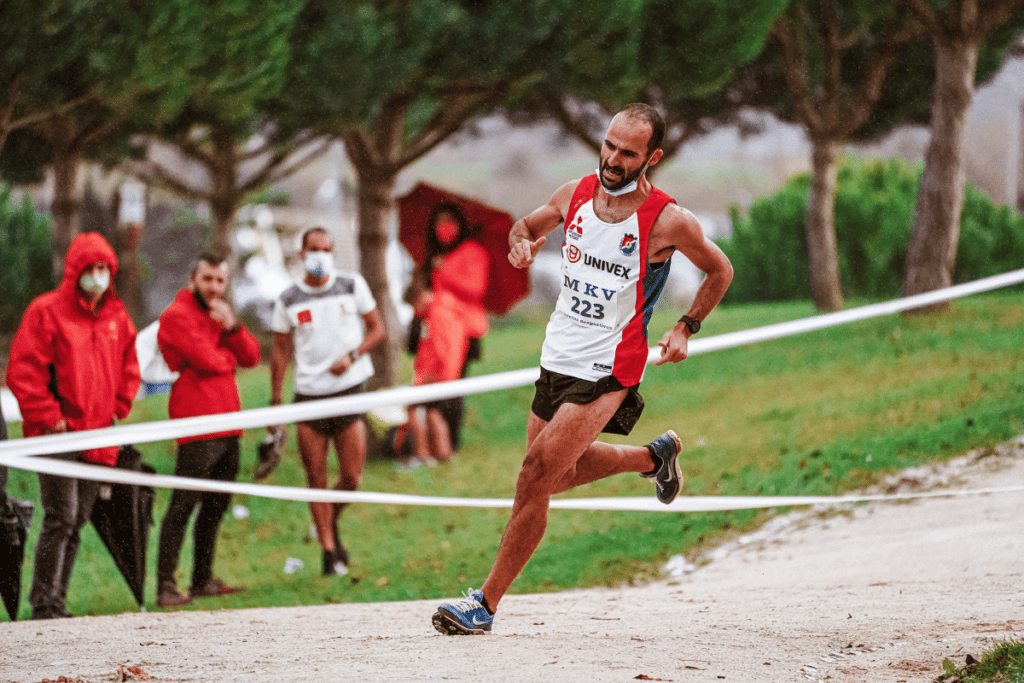Are Runners Tall or Short? (Average Height and Ideal Proportions)
You might think that runners with long legs hold an advantage over their shorter-legged competitors. However, is this common conception really true? What does the ideal runner look like; are runners tall or short?
There is no explicit advantage to being taller or shorter when it comes to long-distance running; runners come in all shapes and sizes. Instead, running performance is determined by other factors such as a runner’s VO2 Max, technique, and overall fitness.
Continue reading to find out what body type is best suited for running and how height can affect performance.
What is the ideal height and body proportions for a runner?
While people of any height can enjoy running, there appears to be an ideal size for competitive marathoners. Most of the world’s fastest long-distance runners are between the heights of 5’3” and 5’8” and weigh less than 150 lbs.
This seems to be because of the running economy that a shorter human frame can produce compared to a taller, lankier one. Shorter runners tend to have an easier time getting oxygen to their muscles and finding a consistent running pace than taller runners.
Does height affect running speed?
In a sprinting context, some evidence shows that height may positively correlate with speed. However, in a long-distance event, there is a slight advantage for the shorter runners. However, height should not be one of your chief concerns if you are just a casual participant in running events. Whether you’re tall or short, you can enjoy running for competition and health benefits. The negative effects of abnormal height are negligible.
Do tall or short people have the advantage in running?

Research from Duke University stated that winning athletes have consistently been getting faster and bigger over the past 100 years. Since 1900, world record sprinters have grown an average of 6.4 inches in height. In terms of body type and race, there is a clear divide between professional runners, and it was speculated that heavier and taller athletes will continue to dominate speed records.
However, while taller runners may have more of an advantage in sprint events, most men’s marathoners are relatively short.
Three of the last four winners of the prestigious Boston Marathon, for example, have stood under 5’9”:
- Evans Chebet 5’6” (2022)
- Benson Kipruto 5’7” (2021)
- Yuki Kawauchi 5’8” (2018)
This is further supported by the fact that the last 3 Olympic gold medalists in the Marathon event have also stood under the 5’9” mark:
- Eliud Kipchoge 5’6” (2021 & 2016)
- Stephen Kiprotich 5’6” (2012)
- Samuel Wanjiru 5’4” (2008)
Sprinters, such as Usain Bolt (6’5”) may stand much taller than the average long-distance runner. Let’s look at a few of each group’s advantages in running.
Short people
- Typically lower body mass
- Better overall running economy
- Lower risk of injury
Tall people
- More capability for power output
- Longer strides
- Higher lung capacity
Overall, height may give an advantage depending on the type of run, but it’s not the determining factor. Glen Mills, Usain Bolt’s coach, said in an IAAF New Studies in Athletics interview that maximizing and maintaining stride length at top speed significantly improves a sprinter’s overall time. Taller sprinters only have an advantage if they master this technique.
Is it harder for short or tall people to run?

It is difficult to make a general statement against tall runners or short runners, as much of this discussion depends on the VO2 max capabilities of an individual runner, along with training intensity and strength. However, if taking long-distance running only into consideration, it could be argued that shorter runners appear to have an easier time competing at a high level due mainly to a better overall running economy.
This refers to the runner’s VO2 max compared to the weight the runner will have to carry with each step. Taller runners typically have a tougher time due to the increased mass that their bodies have to lug around with them during a race.
Famous tall runners
The list of famous tall runners is mostly dominated by females. The average height for a woman globally is 1.615 m or (5’ 3”).
The top female runners mostly stand taller than the average woman. Paula Radcliffe (1.73 m), Eilish McColgan (1.8 m), and Bridget Kosgei (1.70 m) are all examples of elite female runners with above-average height.
Famous short runners
If you’re wondering if there are any famous short runners, prepare to be blown away. Especially in men’s running, there are quite a few minute marathoners.
Some of today’s best male runners are all at or under 5’ 8” tall. This list includes the likes of Eliud Kipchoge 5’6”, Mo Farah 5’8”, Kenenisa Bekele 5’4”, and Haile Gerbrsallselassie 5’4”.
This group comprises world record holders, Olympic Medalists, and Global Championship gold medalists. Unlike sports such as basketball, height does not provide a marked advantage in running.
Running tips for short people

Here are a few tips for short runners to consider.
- Focus on Pace
- Don’t Overstride
- Consistent Breathing
Focus on Pace
While this is important for both tall and short runners, shorter runners have an advantage with regard to pace because they will naturally take more steps that taller runners. If you want to increase your performance, count steps rather than distance. Shorter, more rapid strides will produce a faster time over a longer distance than long strides.
Don’t Overstride
This leads us to our second tip, don’t overstride. Sometimes to compensate for their shorter strides, smaller runners will begin overstriding. This not only slows you down but puts you at a greater risk of injury as well.
Consistent Breathing
Consistent breathing patterns will allow runners of all sizes to ensure they give their muscles the oxygen they need. Shorter runners should already hold a slight advantage in this, but it is a good practice to remember anyway.
Running tips for tall people
Here are a few tips for tall runners to consider.
- Deep Breathing
- Relax Muscles
- Focus on Pace
Deep Breathing
The taller an athlete is, the more difficult it is to get the oxygen they need for their different muscle groups. Tall runners need to put extra focus on this aspect to ensure they won’t experience muscle failure.
Relax Muscles
Bigger, stronger runners have a tendency to tense up in an effort to exert more forward force. This is counterproductive, however, and should not be encouraged. Instead, tall runners need to focus on relaxing their muscles and finding a rhythm to settle into with their strides.
Focus on Pace
Tall runners need to focus on pace for the same reason their shorter counterparts need to focus on the concept. Focusing on developing a consistent pace is an efficient way to improve times.






